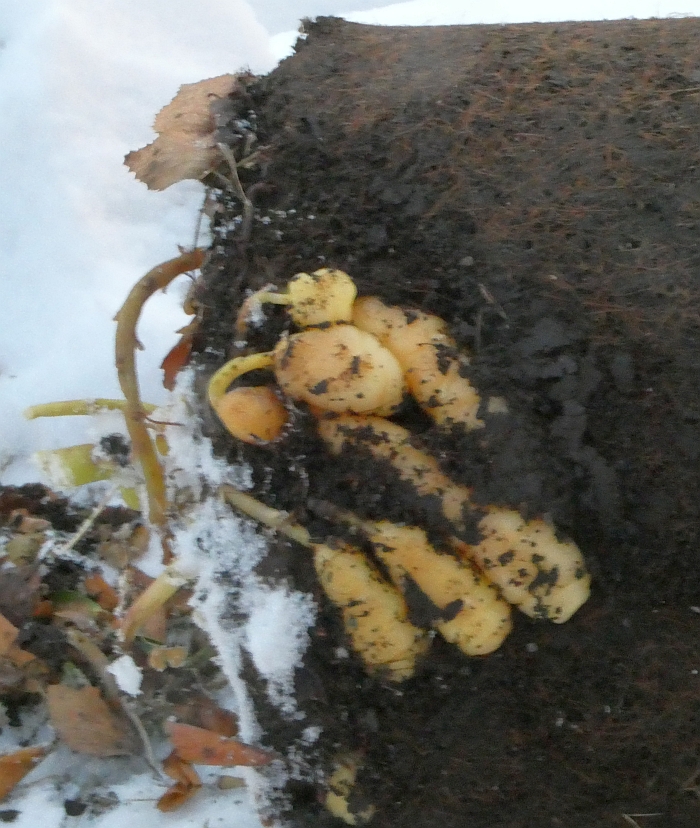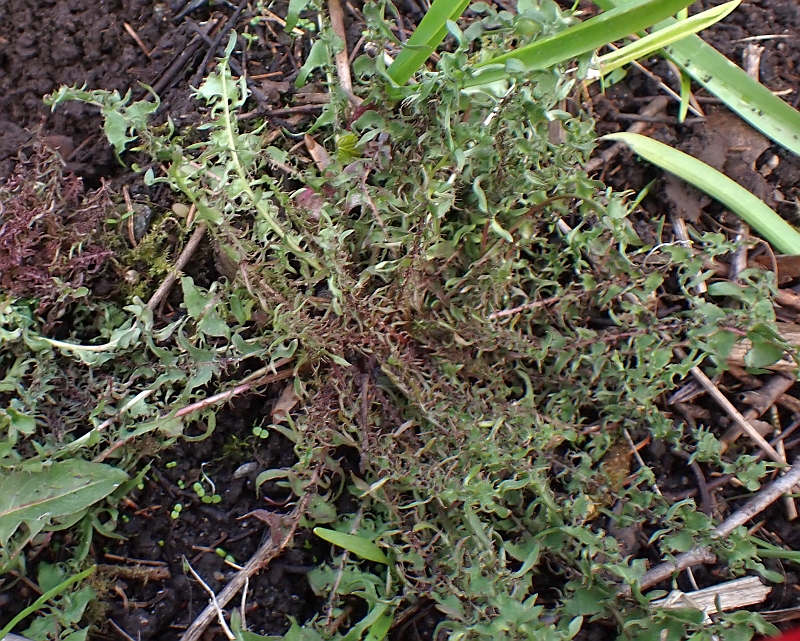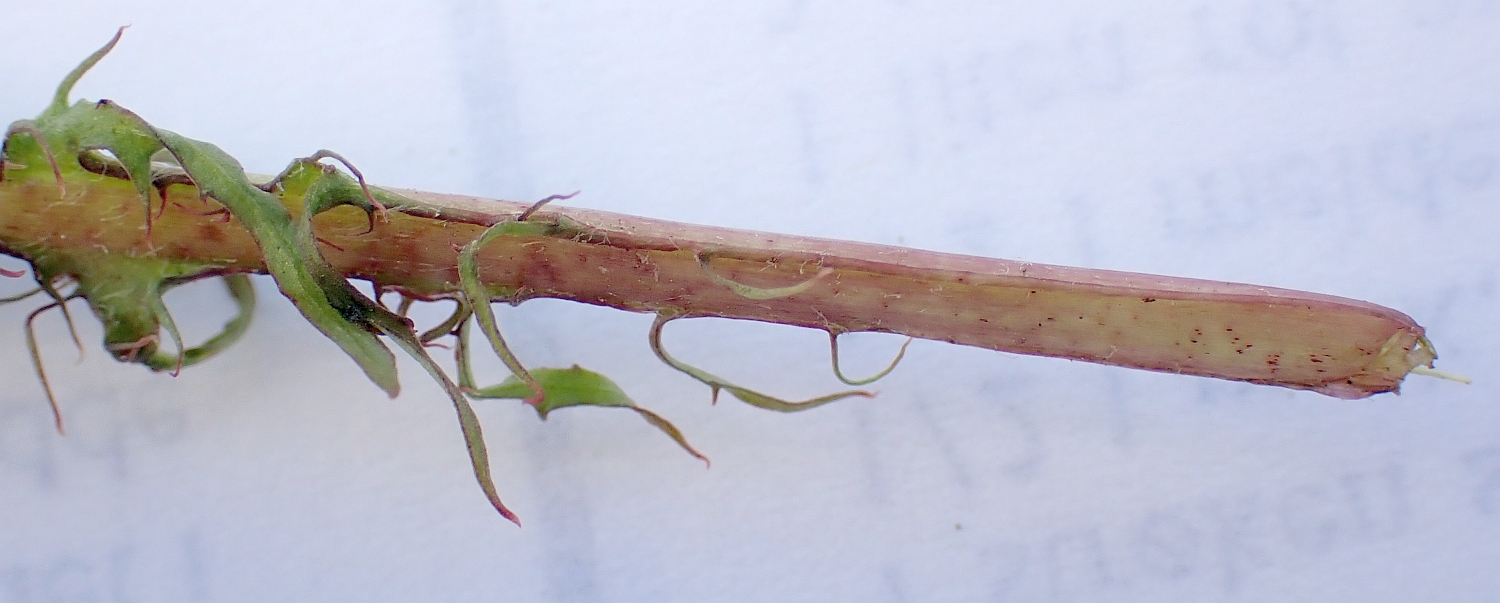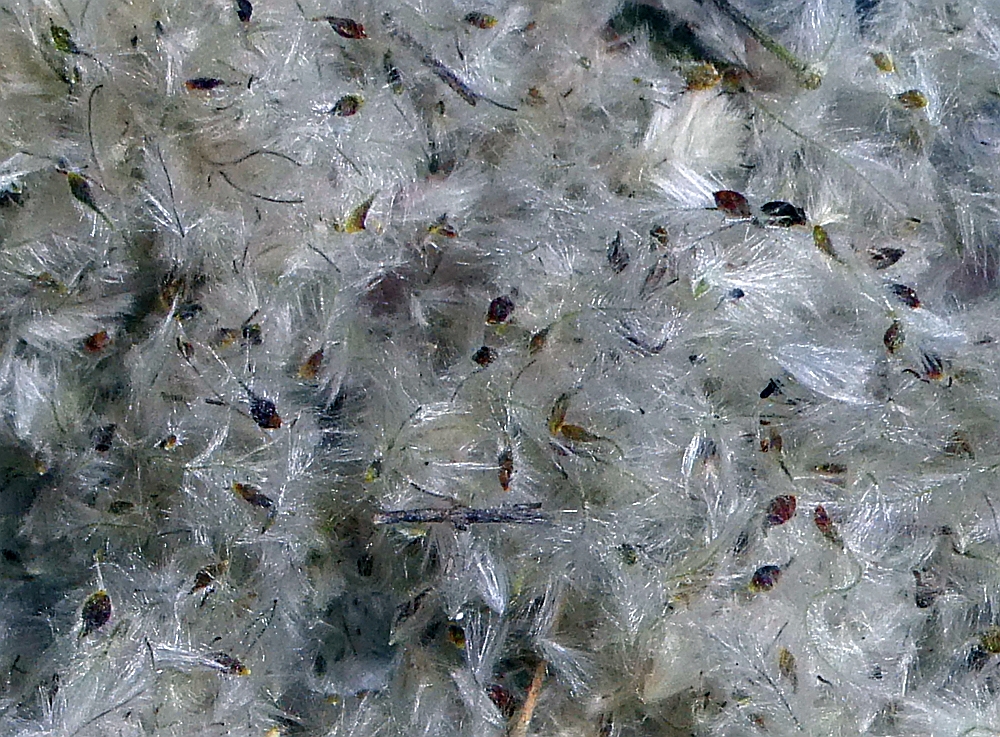Bullfinches (dompap) take a very wide range of seeds in my garden including hawthorn, rowan, nettle and Norway spruce, as well as buds of different trees, but this was the first time I’d seen them taking guelder rose (Viburnum opulus) seed and I could see them discarding the flesh of the berries. Even when they have a rich supply of sunflower seeds, they will continue also to take natural food.
Monthly Archives: December 2022
Xmas diversity from the rhizosphere
Presenting this year’s 30 rhizosphantastic Xmas vegetables, all roasted in the oven, served as every year in the last 40 with nut roast, bedecked with the following seeds / bulbils: alpine bistort / harerug (Polygonum viviparum), Himalayan balsam / kjempefringfrø (Impatiens glandulifera), evening primrose / nattlys (Oenothera biennis) and opium poppy (Papaver somniferum). The tubers are listed below the pictures.



The 30 tubers, roots and rhizomes in the picture are:
Solanum tuberosum (potato / potet: 11 varieties)
Daucus carota (carrot / gulrot)
Oxalis tuberosa (oca: 2 varieties)
Arctium lappa (burdock)
Scorzonera hispanica (Scorzonera / scorsonnerot eller svartrot)
Tigridia pavonia (cacomitl)
Pastinaca sativa (parsnip / pastinakk)
Beta vulgaris (beetroot / rødbete)
Tropaeolum tuberosum (mashua)
Anredera cordifolia (Madeira vine)
Helianthus tuberosus (Jerusalem artichoke / jordskokk : 3 varieties)
Brassica rapa (turnip / nepe)
Brassica napus (swede / kålrot)
Dahlia (Dahlia / georginer)
Polymnia sonchifolia (yacon)
Sagittaria latifolia (wapato)
Allium cepa (onion)
Oca harvest 2022
Xmas isn’t Xmas without Oca and a hoard of other tubers, served with the traditional nut roast. Pre-xmas preparations includes the annual oca harvest. Oca (Oxalis tuberosa) is a short day root crop hailing from the central and southern Andes. When harvested at the first frosts, yields are poor, the plants needing a long mild autumn to fatten up the tubers for the festive season. I therefore grow my oca in large buckets which we bring into the extension to the house at the first hard frosts which was late October this year. We don’t heat the extension which is normally a fairly constant 5-10C in winter and hence a good place to store vegetables and other plants like my bay tree (Laurus nobilis). There’s no sunlight and I don’t use artificial light so there’s no diurnal variation in temperature either. The oca plants don’t grow vegetatively, but miraculously the tubers do grow over the few weeks to harvest:
The House from Nordlandsbanen
Geeking out with Dandelions
Earlier this year I bought the Field Handbook to British and Irish Dandelions by A.J. Richard which contains descriptions, photos and keys for all 239 known UK and Irish species, a book written during Covid lockdown! I was curious to go deeper into the world of dandelions and to hopefully identify the various species I have in my garden and area around apart from the obvious moss-leaved dandelion (is this really Taraxacum sublaciniosum?), the pink flowered dandelion (Taraxacum pseudoroseum) and white-flowered species like Taraxacum albidum. And what about some of the historical cultivars such as the French cultivar “Pissenlit Coeur Plein Ameliore”. What species is this?
Inspired by the book, I set about taking detailed photographs of about 40 different dandelions at home and at the Væres Venner community garden with the thought to have a proper look and try to key them out during the winter months. I did try one species but it was daunting and they may not be species found in the UK. I have introduced quite a few cultivated and wild Taraxacum species in the garden over the years. I also joined a couple of specialist Taraxacum groups on FB. There I met Alex Prendergast in Norwich who kindly sent me seed of 25 mostly identified species! Having the answer for species that I could grow and have before me should hopefully help me keying out some of my species! I finally got round to sowing these dandelions today; see the album below. At the very bottom are detailed pictures for one species, the moss-leaved dandelion, which I’ve learned are necessary for dandelion identification.

 Detailed photos of the moss-leaved dandelion, so far known as Taraxacum sublaciniosum
Detailed photos of the moss-leaved dandelion, so far known as Taraxacum sublaciniosum
“Delikatess”:
Old Man’s Beard
Waxwing and Tawny Owl
A small flock of Waxwings (sidensvans) finally arrived at the end of November and have been foraging in the garden since (rowans / rogn failed this year). In these videos, they are eating apples, elderberry and guelder rose berries (epler, svarthyll and krossved). I’ve heard tawny owl (kattugle) calling in the garden regularly recently too and the last video is a recording of one calling.
White-tailed eagles
We were entertained yesterday by 3 white-tailed eagles (havørn) flying low over the bay and two sat for some time on trees on Malvikodden on the other side of the bay, about 700m away, hence rather poor resolution film.




































